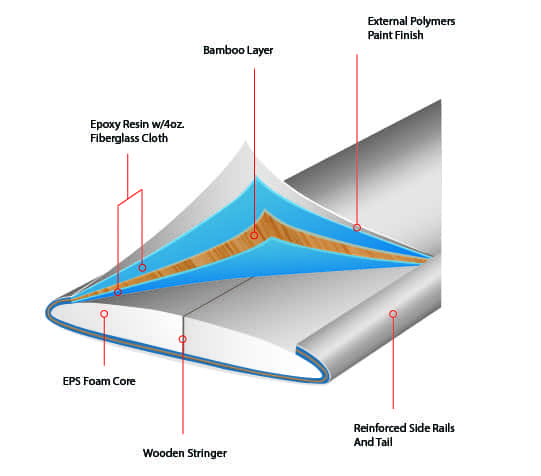SUP Paddle Board Guide

When choosing a Paddle Board for the first time it can be quite confusing as to what will be best for you. There are thousands of boards on the market but the first thing to consider is whether to go for an inflatable or hard SUP (stand-up Paddle Board). One of the huge appeals in Paddle Boarding is that it is generally accessible to anyone and everyone of all shapes and sizes. Yes if you have a certain degree of fitness/core stability then you will take to it quicker, but generally most people who are on the correct board and given the right instruction can be up and running within half an hour.
There are a few questions you should ask yourself so that you can purchase the best and correct board for your needs.
- Inflatable or Hard SUP.
- Inflatable SUPs are hugely popular with first timers as they are often cheaper and can be stored their bag, however the recommended inflation is 15psi which is hard work even for a strong person. Lot’s of inflatable SUP riders leave their board blown up because of the inconvenience.
- Ocean Monkeys specialise in hard boards which are far more superior in performance all round, aesthetically more pleasing
- How much do you weigh? – bigger boards for heavier paddlers
- Where will you be doing most of your stand up paddling?
- Do you want to use it for long distance paddling or are you more interested in stand up surfing? the longer the board the more glide per stroke.
- Do you want a really stable board or would you prefer more maneuverabilty? The smaller the board the more maneuverable.
- Often a blend style board suits most riders which enables you to tour/cruise or have the occasional surf.
- One of our most popular boards is The Atlantic Emperor at either 10’6″ or 11’6″. Most ladies would be fine on a 10’6″
We have tried to explain in the simplest format below the different elements of the Stand up paddle board, if you are a little confused don’t worry you can call us to discuss anything SUP related!
BOARDS
All Stand up paddle boards have the same characteristic elements which make them a board such as; nose, tail, deck, bottom, rails and fins. Measurements for the length and width of boards is usually in Feet (ft) and inches (”) These elements can be different for each individual board and therefore some boards will be better in certain paddle boarding conditions than others.The volume of a board loosely determines a board’s flotation and this can be related to both the rider’s weight and skill-level helping determine the most suitable equipment for that rider and where the paddler will use it.
The board’s width is also related to its shape, the wider the board the more stable it will paddle, as an example – a 28″ inch wide board will be less stable than a 32″ wide board for an average 12st beginner paddler but faster to paddle as the water flows easier around a narrower board.
CONSTRUCTION
If you plan to spend more time in the waves and want the best performance in terms of glide and speed on any type of water Choppy or calm – Epoxy Fibreglass boards are the suggested option.
Epoxy boards are made from a foam core laminated with layers of fibreglass or carbon for strength and rigidity. The images below show an Inflatable board and all its layers and a EPS boards typical construction.
There are 3 main categories where you can use a Stand up paddle board and these sometimes cross over into one another.
FLAT WATER SUP
If you’re paddling is mostly going to be done on either a River, Lake or protected coastal area then Most Flat water SUP boards are designed to be very stable in a flat water environment and are usually between 30-34″ inches wide, 10ft+ in length and have plenty of volume.
Volume has a key role to play in choosing the type of paddling you aspire to do, the greater the volume of a board = the easier and more comfortable it will be to stand on. The volume of a flat water SUP board will relate to the paddlers weight and skill level.
You can use this formula below to work out an estimate of how much Volume you should be looking at in your board.
Beginners – your weight in (kg) x 2 (ie; 90kg x 2 = 180 litres
Intermediates – your weight in (kg) x 1.7
Advanced – your weight in (kg) x 1.3

